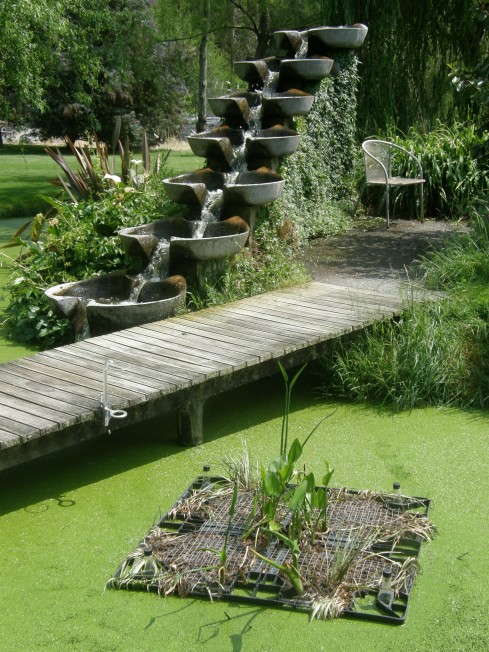
November 2019 and the duckweed returned with the advent of summer. And how! 24 November saw the launch of the floating island, the plants of which are intended to be nutrient strippers, to help clear the water, as well as be decorative.
Pond Pickerel (Pontederia cordata) should give some lovely spikes of blue flowers, later in the season. Around the edges, the other plant - Sweetflag (Acorous xxxx) - did not like being out of the water that long. It was two weeks from building the floating island to launching it in the pond.
The framework is a discarded plastic pallet. Floatation courtesy of eight soft drink bottles. Old wire netting, doubled, stops the growing media from falling out. Eventually - I hope - the roots of the plants will bind the bark chips together. The scraps of netting on the top are to stop the ducks digging.
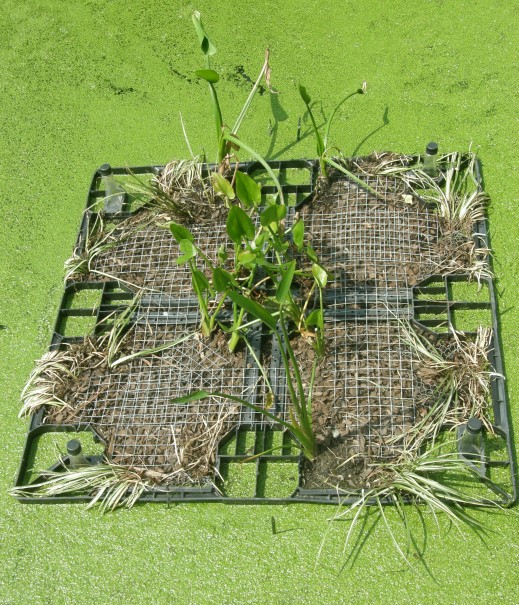
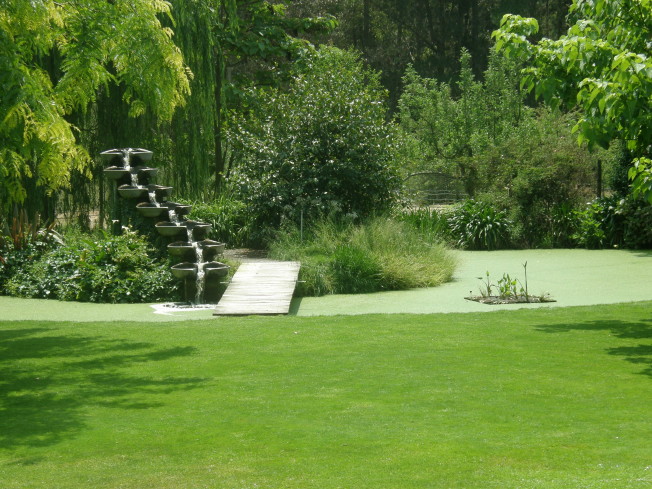
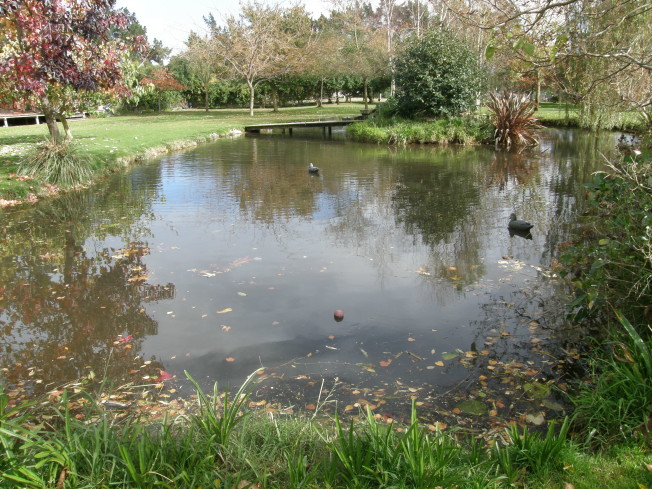
In the space of a week or two, the watermeal has largely disappeared. Nice to see the water, again. Twenty or so ducks were re-located from the pond to a wildlife reserve, as the pond ecology could not cope with that many birds. Especially the serious bank erosion. Lucy, the rescue goose, Trevor the female Mallard and two ugly-but-cute Muscovy female ducks remain. May 2019.
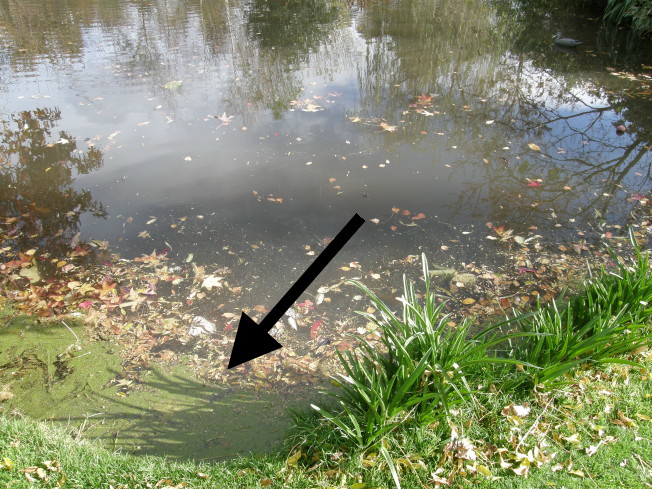
The remnants of the duckweed and watermeal, blown to the eastern end of the pond. May 2019
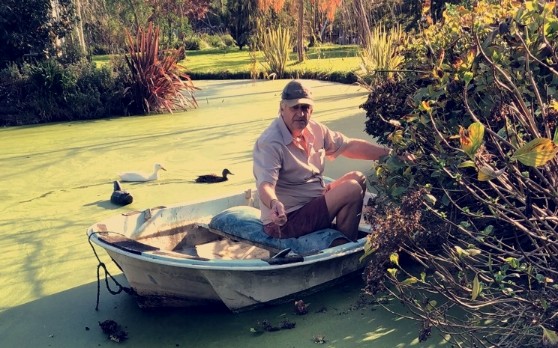
Some people need gardening gloves to prune their hydrangeas. Some people need a boat and secateurs. Ah, well, each to their own. The surface of the pond is 100% covered in a weed called watermeal (Wolffia). It's edible, but the ducks are making any noticeable inroads. 27 June 2018.

From the house deck, on a hot summer's evening. 11 Dec 2017.

A look across the lawn, from the house deck, on a hot summer's day. 6 Dec 2017.
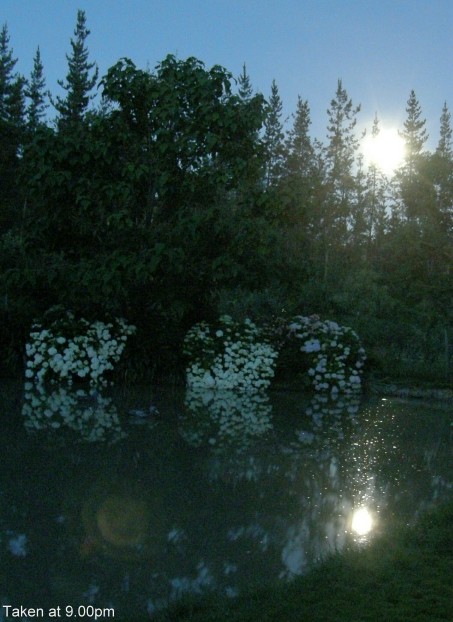
3 Dec 2017.
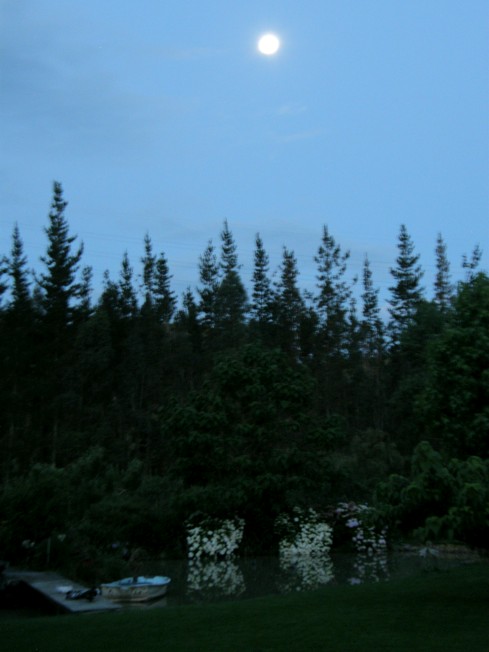
After dark, 2 Dec 2017.
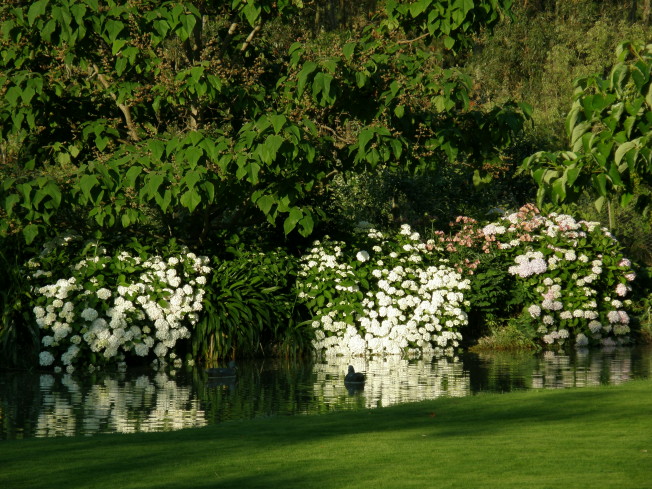
Hydrangeas reflected in the pond by the setting sun. A few alstromerias in there, too. 2 Dec 2017.
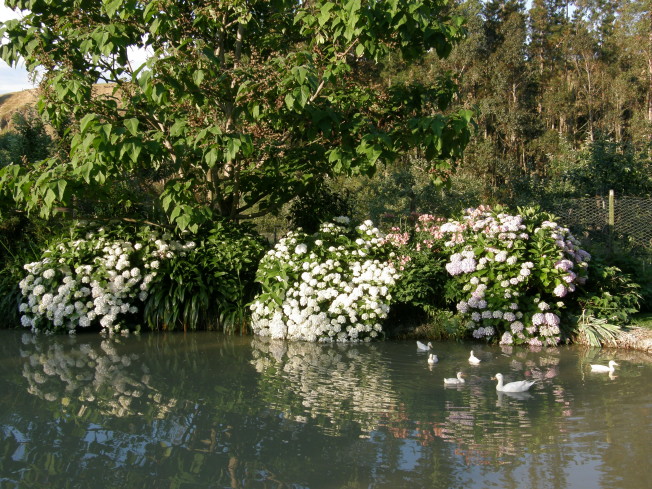
Mother duck, five ducklings and the hydrangeas reflections. 2 Dec 2017.
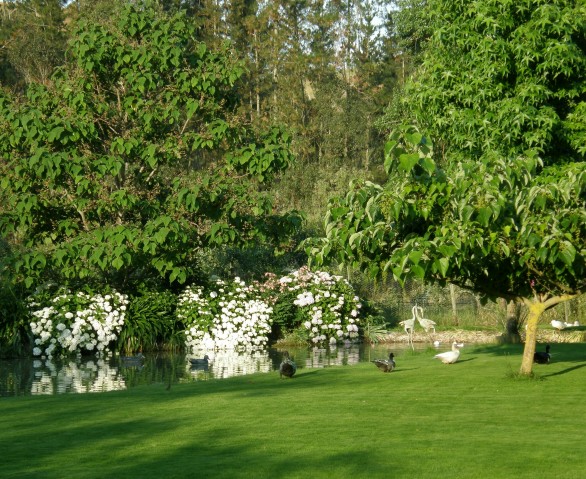
The setting sun giving a reflection of the hydrangeas. The Muscovies waddling off, stage right, in no hurry, even. 2 Dec 2017.
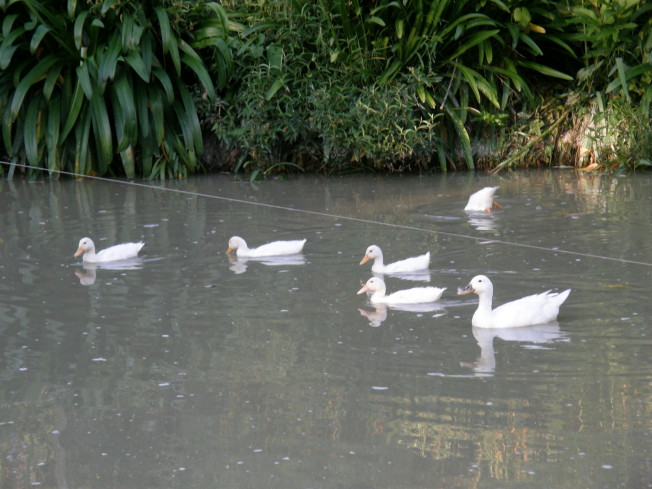
The five remaining Peking ducklings and mother, taking a cruise. 2 Dec 2017.

The [wide angle] view from the house deck as the sun sinks slowly in the west. 17 Nov 2017. Four individual photos auto-stitched by the Olympus camera software.
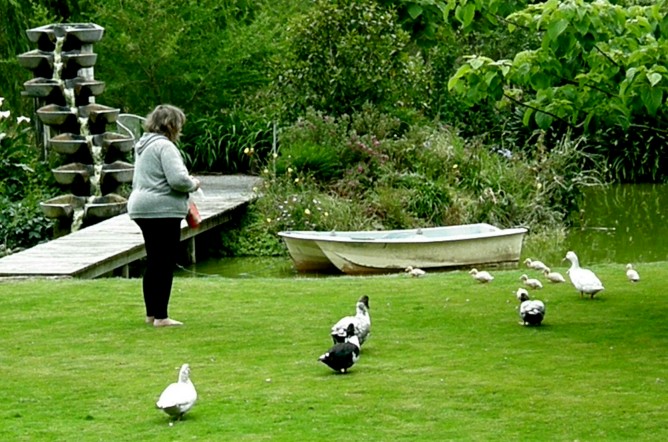
Brenda feeding the Muscovies, and the eight Peking ducklings and the mother duck.
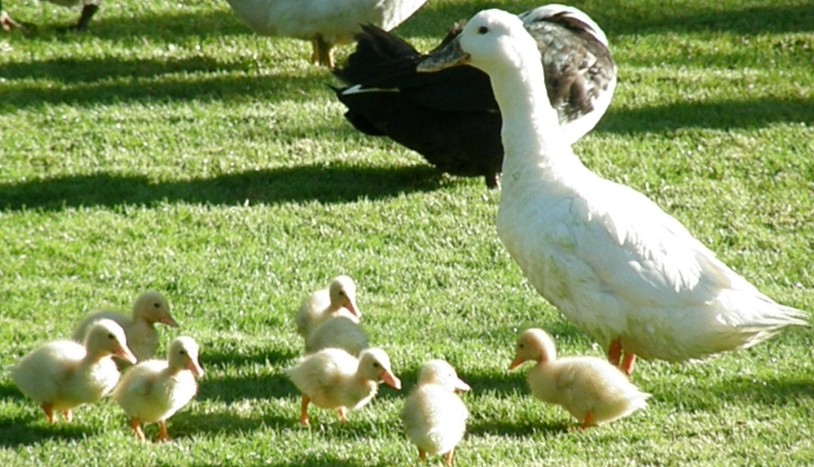
Mother duck and the eight Peking ducklings. A bit over two weeks old, on 12 Nov 2017.
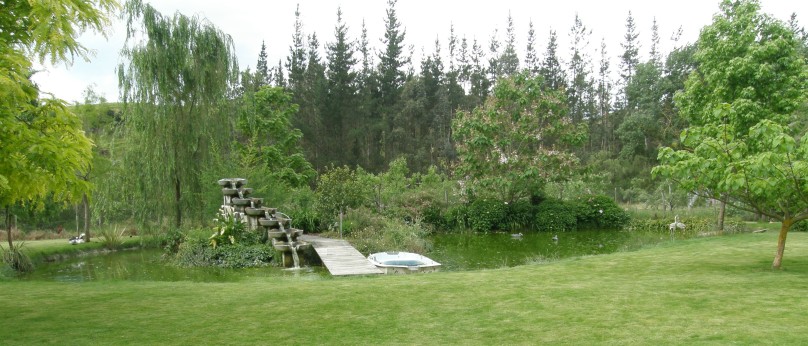
All is Spring green - still - growing well and looking good. Dad's old dingy (from Mahia) is moored alongside the bridge. The water is green, too, but the incidence of scum has vanished. Perhaps that's the influence of the ducks? Supposedly, it can take up to two years for a new, land-locked pond to settle into a balanced state.
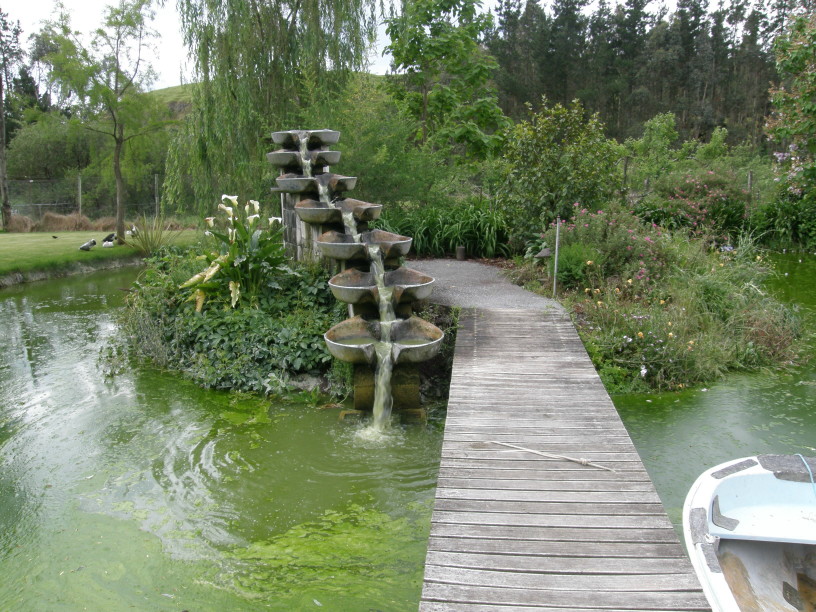
A closer view, looking across the bridge. In the backgound, the Muscovy ducks are loafing on the pond bank, under the Swamp Cypress. September 2017.
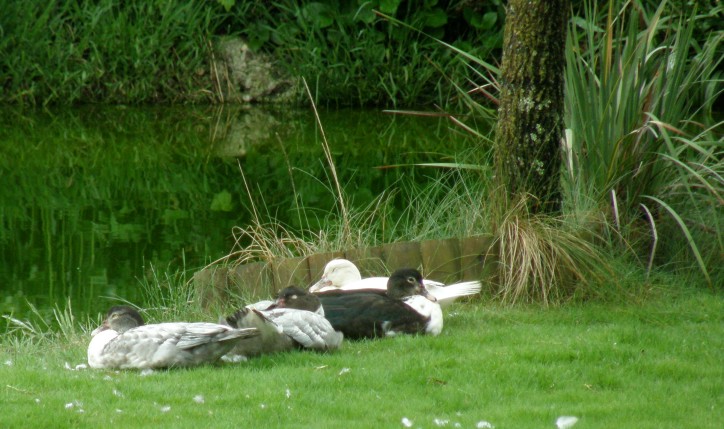
Aforesaid Muscovys - three ducks and a drake.
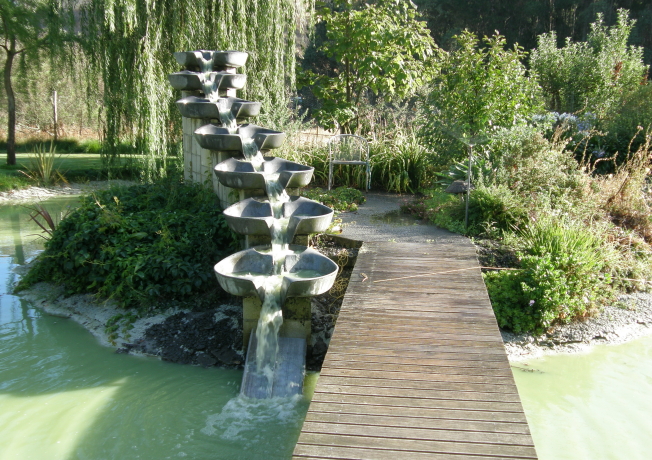
2017 - late January. After the reinstatement of the pump, plus new pipework, and some serious grinding, the flowforms are again running. The change up to a 50mm diameter pipe from the pump to the top flowform produced a huge increase in water volume. An increase was expected, but the difference from the earlier, temporary reservoir and pipework arrangement is spectacularly amazing.
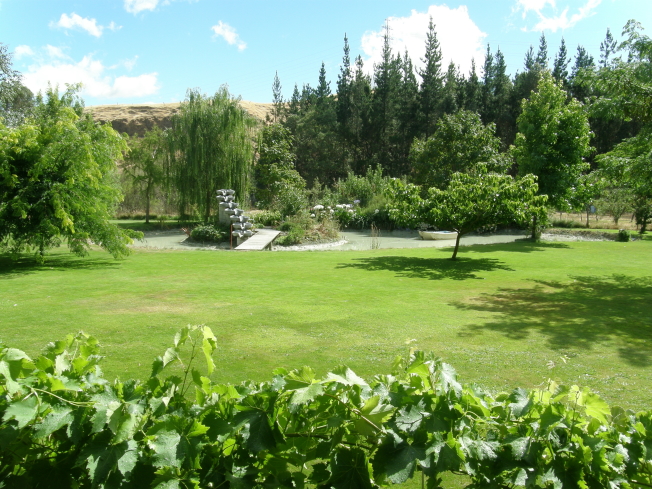
2017 - in mid January. The view from the house. Yes! That is a dingy you can see, moored out there. It's being used to check for leaks and holes on the island banks and other parts difficult to get at, by foot.
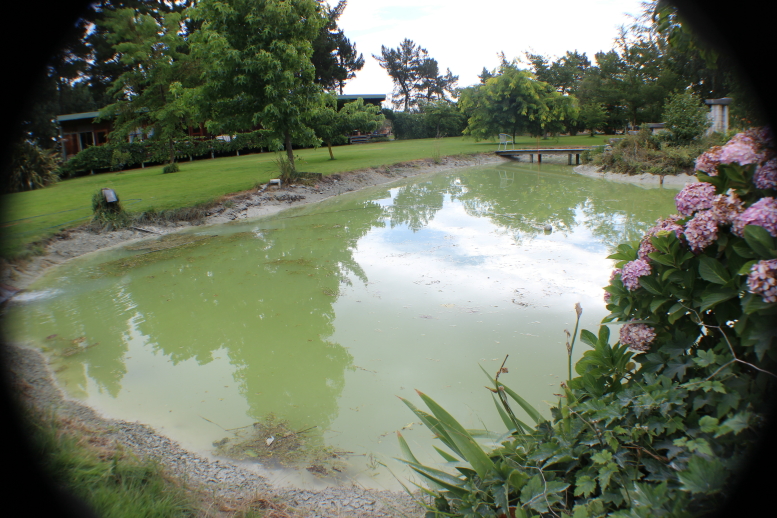
2017 still. Nine and a half tonnes of bentonite wheel-barrowed in, spread around, then the filling started.
Click here for an interesting comparison to later, in 2018, when the water level is higher, the banks are seemingly stable and the water 100% covered in watermeal weed (Wolffia spp.), with grass down to the water's edge.
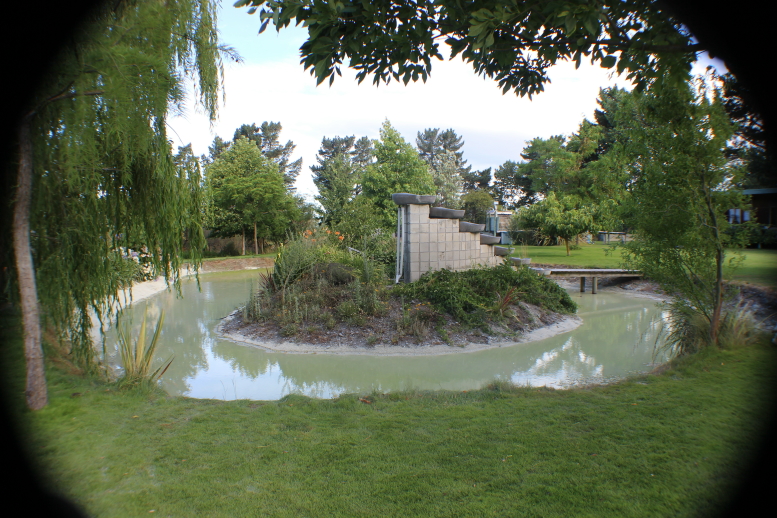
2017 - in mid January. Another angle.
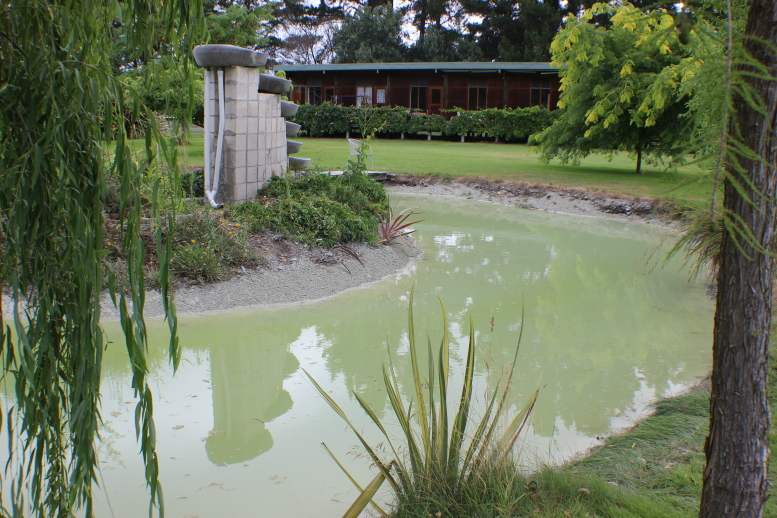
2017 - mid January. And another aspect.
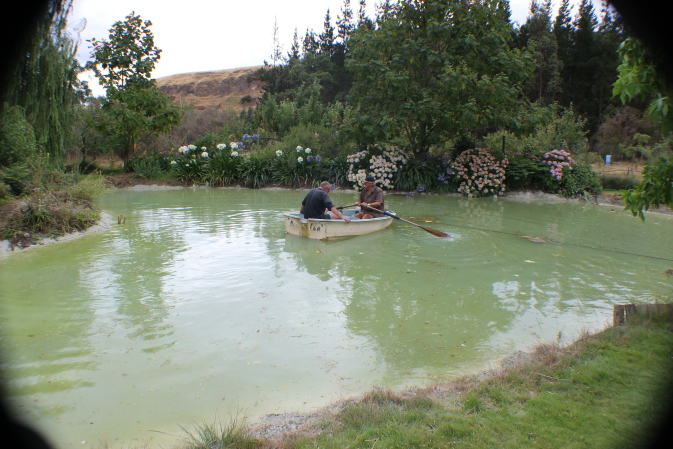
Finally! After Dean and I wheel-barrowed nine-and-a-half tones of bentonite clay into position - we have water! Cloudy water, but water none-the-less. A bank survey from the family pinnace - ex Mahia beach. 2017
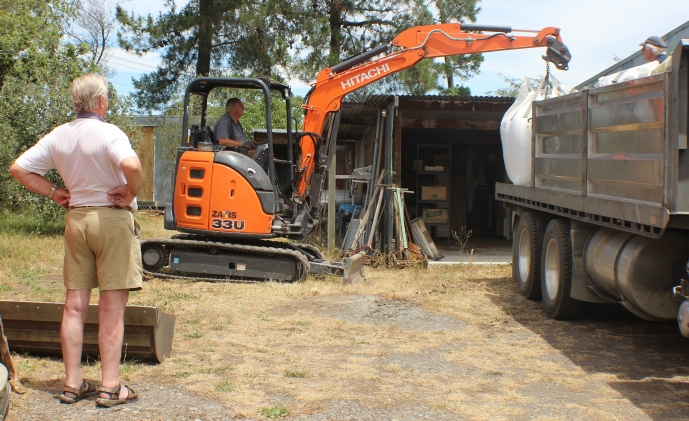
Direct of operations David Skinner (Kerikeri) supervising the unloading of ten tonnes of bentonite clay from Barry Stoddart's truck. Yours truly on the digger. It struggled to lift the swing bags off the truck, even with the bucket de-mounted. January, 2017
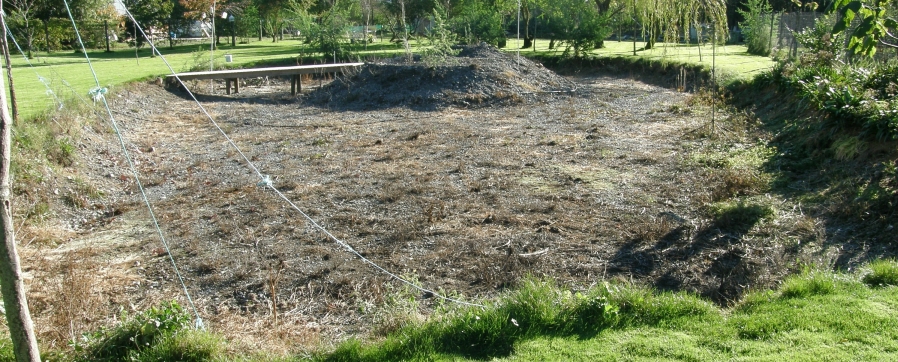
A long view of a bare pond bed of stones and shingle. 2013
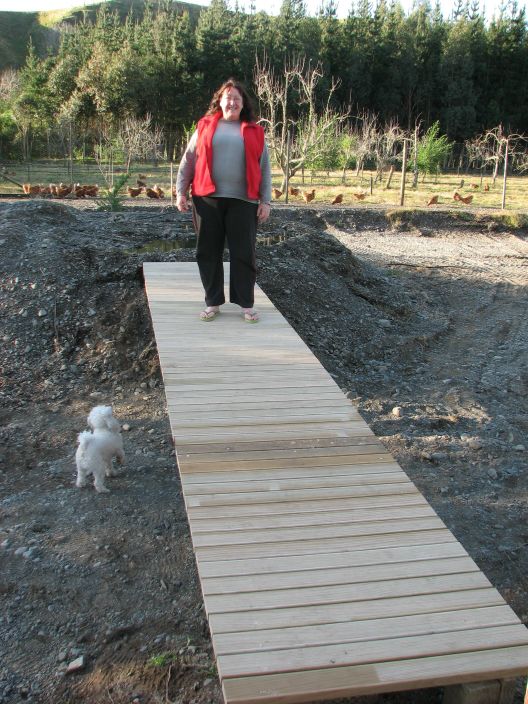
Another stage in the development. The stones and shingle show that the sealing task was never going to be easy. Late winter, 2011.
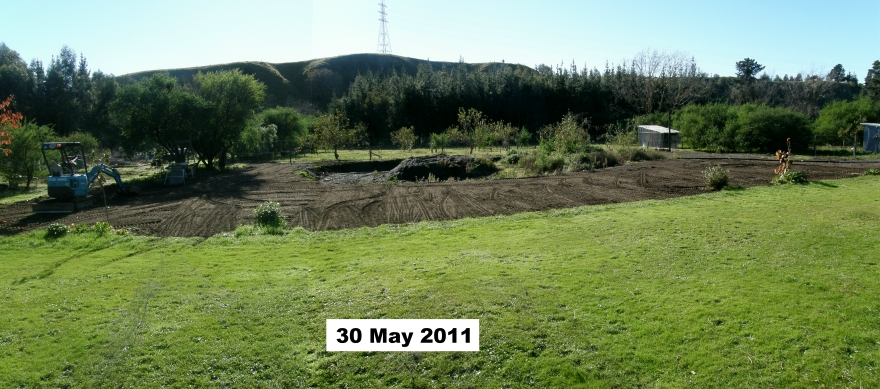
What it looked like in the early days of the project.
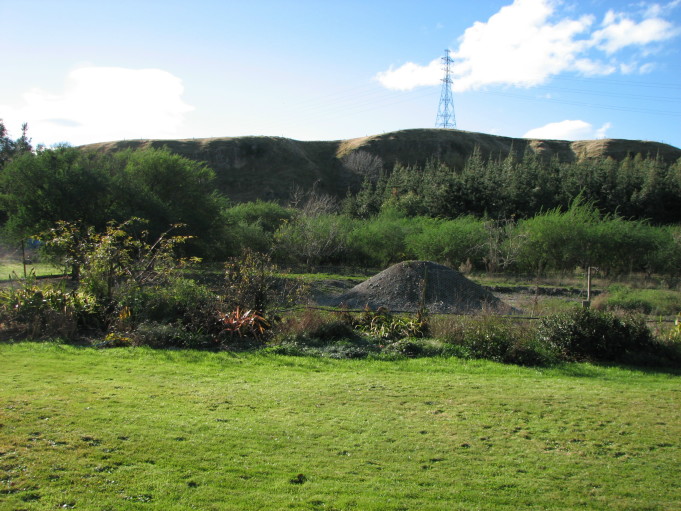
Looking from the house, towards the hill. Barbara's garden still in place. 2010.
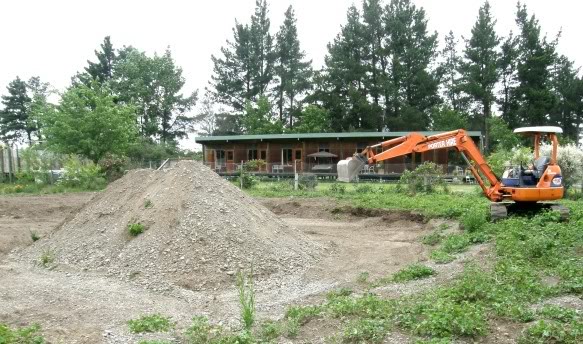
Even earlier. 2009.
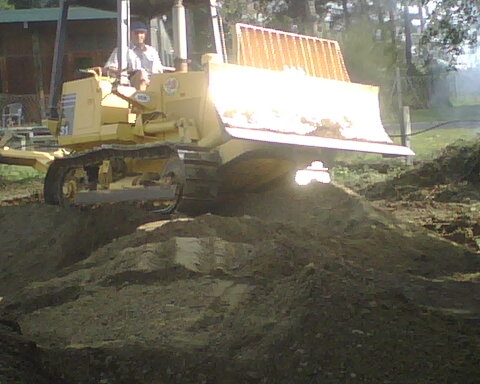
Earlier still. 2008.
Pond bed screening
Some of the formative stages - screening the base course so that only fines remained, over which the 10 tonnes of bentonite clay powder was later spread, in Jan 2017.
































